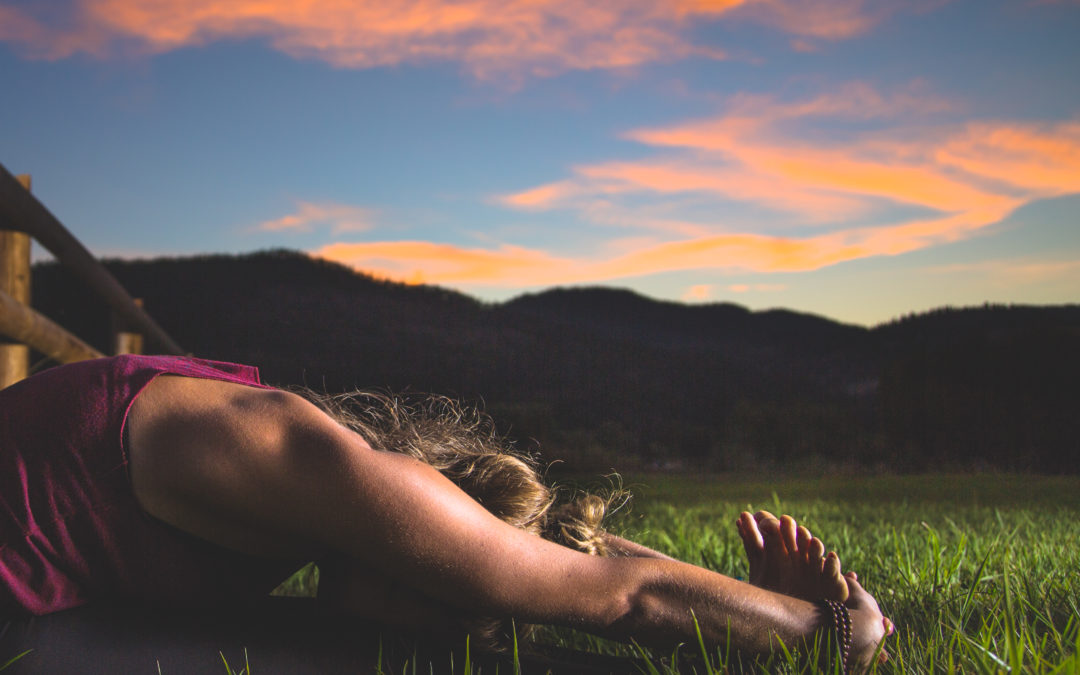What is Yin Yoga?
Yin Yoga refers to gentle and slow movements, poses held for longer periods of time, and a general sense of turning inward. Since it doesn’t take much energy, yin yoga is perfect for when you are feeling sick, run down, or over stimulated. It encourages circulation and energy flow to the joints and internal organs through passive poses that require little muscle engagement. When held for several minutes the poses place pressure on energetic pathways called meridians (think acupressure points) activating energy flow along these pathways. This helps to bring us into balance energetically. Since yin yoga is a quiet practice, it’s best done with soft music or complete silence.
How is Yin Yoga different from regular yoga?
While most modern yoga practices incorporate movements that flow from one pose to the next, yin yoga is slow and still. Rather than engaging in muscles to build strength (like in plank) yin yoga focuses on relaxing muscles in poses that are held for longer duration. Some forms of yoga are very stimulating, enhancing muscles, and building strength. There are tremendous benefits of this, however, if this is all you do, something is missing. Yin yoga targets more deeper connective tissues like ligaments, joints, and bones, to increase mobility and flexibility. This is why Yin Yoga is great for the aging population. It’s a quiet and simple practice, though simple doesn’t mean easy!
Why do Yin Yoga?
Though you won’t expect to build up a sweat in a yin yoga class, what you will gain is increased flexibility, relaxation, and inner peace.Yin yoga can help improve energy flow to internal organs, as well as joints and deeper connective tissue that often gets tight as we age if not taken care of. Yin yoga also helps us live in the present moment, and deeply explore what’s happening right now. This is essential considering the hectic, stressed out world we live in. I feel like I need a yin yoga class every time I turn on the news.
Some general guidelines to remember when trying Yin Yoga for the first time:
- Come to each pose with sensitivity to the limitations of your body. Go to your appropriate edge- that place between it being too easy and too painful.
- Relax your muscles in each pose. Tensing up will stop the flow of energy, so feel your skin soften up a bit and maybe back off a little if you find yourself tensing up in a pose.
- While it may look easy, most people find it challenging to be still for long periods of time, so I recommend starting by holding each pose for 1-2 minutes and gradually working your way up to 5 minutes per pose.
- Deep emotions can surface when you become more reflective and aware of your thoughts. This is a good thing. Whatever thoughts and emotions come up during these poses, let it come up. We can’t eliminate our thoughts but we can make peace with them.



love this. Ive always loved Yin yoga, its so balancing and it has helped me so much with flexibility!